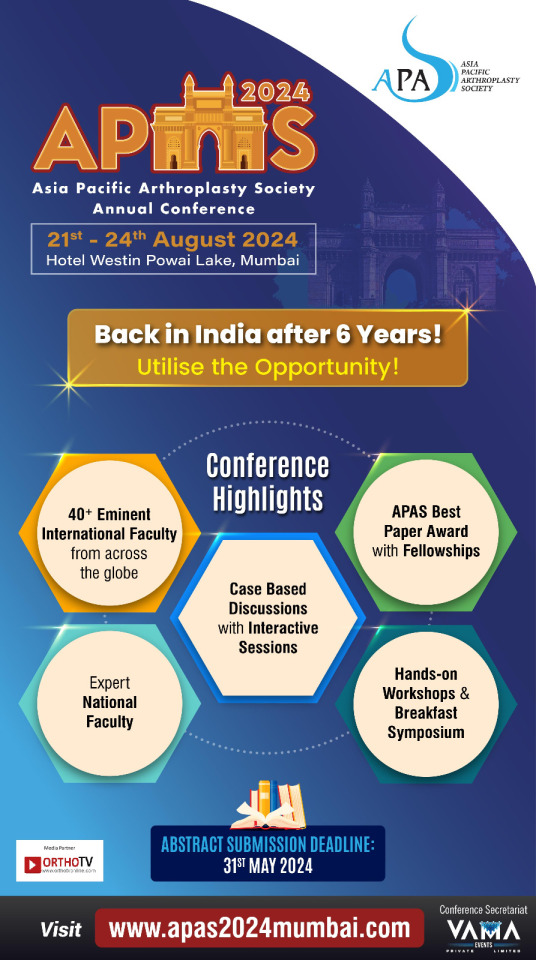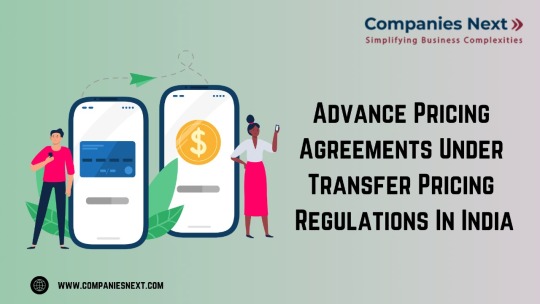#APAS
Text
Art Using Artificial Intelligence, and What It Means for Human Artists
DALL-E 2 is but one of several artificial-intelligence transformer models designed to create art (broadly defined) based on natural-language descriptions. According to a recent post on Jason Horej’s RedDot Blog, DALL-E 2’s “machine-learning system was ‘trained’ on a data set of 12 billion images” to produce new images based on natural language input.
Horej’s sensational headline of “AI is coming for your job” grabs your attention, but then he pivots: In the long run, AI could be added to the artist’s toolbox.
The potential revolution goes beyond Horej’s list of uses for brainstorming/thumbnailing, marketing, and the like. That’s because human-produced art has historically already had to react to a previous threat: Photography.
The rise of photographic technology displaced drawing and painting for a significant portion of art’s traditional purpose: Documenting real persons, places, and things. Consider how today, we compare painted portraits of Abraham Lincoln (or his engraved portrait on the $5 bill) with known contemporary photographs of him; how Mathew Brady’s gritty black-and-white photographs of Civil War battlefields helped dispel some of the mystique surrounding the meat grinder of modern warfare; and how Ansel Adams took landscape photography itself beyond documentation and into the realm of art.
In reaction to photography’s encroachment on fine art and illustration’s traditional territory, handmade art in the nineteenth and twentieth centuries was under pressure to do things that photography couldn’t (yet): Portray historical persons or events from before photography, render fantastical scenes, and most controversially at the time, use new drawing, painting, and printing techniques to push the envelope of everyday perception.
The explosion in new art styles and movements in the late 19th and early 20th centuries can be laid directly at the feet of photography’s challenges. Impressionism, pointillism, cubism, fauvism, surrealism, dada, expressionism, color field painting, pop art, and more – all were undertaken by their practitioners to make sure that mark-making remained a relevant endeavor.
I dare not speculate what directions fine artists and illustrators will take in order to stay a step ahead of AI’s capacity to produce painterly, fantastical, and even abstract images using textual descriptions to crib from the entire history of visual art.
I will, however, speculate on what the developing technology means for comics creation.
* * *
When I was first workshopping my comics art with fellow comic creators, I was in an APA, or Amateur Press Association – a multi-author zine. Ours was quite a hefty one, printed at 8.5” x 11” and often a quarter-inch thick or more, and as it was an APA for comics creators, our raison d’être was critiquing each other’s work. A couple of our members were comics letterers – the folks who add the dialog balloons, captions, and sound effects to comics art.
In those days, comics lettering was almost always done by hand with a dip pen, along graphite guidelines ruled using an Ames guide (later produced by Alvin, who have themselves now been taken over by another company). Possibly the sole exception to comics hand-lettering was Mad Magazine, the text for which had to be typeset, printed out, cut up to fit the word balloons, and pasted onto the original art or photostat (a high-quality black-and-white copy made with a photographic machine, heavily used in print production departments before photocopies got good). This paste-up process most likely used the traditional paste-up tools of X-Acto knives and rubber cement, as it was the state of the art for decades.
Coloring of comics was different in those days, too. Four-color (CMYK) separation had to be done by hand, using three acetate overlays: One each for the transparent colors of cyan (C), magenta (M), and yellow (Y). The colorist would attach registration marks (pre-printed on clear plastic tape) to the corners of the original art beyond the print margins, and to each overlay, aligning them to make sure the printer correctly aligned the cyan, magenta, and yellow to the black when it came time to print.
For each overlay, the colorist would affix pieces of translucent Rubylith to correspond to solid color, and Zip-a-Tone or other mechanical screen tone to use regular patterns and sizes of dots to imitate color densities less than 100%. For all the labor involved, hand separation was a blunt instrument; if you wanted to take advantage of a wide range of colors, you needed a color guide book (see photo). For speed and a standardized house look, especially on series, most comics colorists were expected to stick to a limited palette, relying on the inker’s solid black (the K in CMYK) for shadows. Unless you had special graduated screen tone sheets, gradients were simply impossible. If you tilted your tone screens wrong relative to each other, a Moiré effect could result.

By the late 1990s, both lettering and coloring for comics had gone digital. As a result, while the comics letterer went from being an artist to being a graphic designer, the colorist went from being a graphic designer to being an artist. All sorts of special effects became possible – and, most interesting to me in my own work, digital printing automated the color separation process, allowing comics to be published using traditional art media including watercolor, collage, acrylics, and gouache.
* * *
What will natural-language-driven AI art mean for the future of comics? Will every comics writer be able to illustrate their own comics without having to partner with an artist? Will writer-artists become simply...writers?
It will probably be a lot more complicated than that. Consider how digital lettering is not just typing; there are still design skills involved, some of them similar to the skills hand-letterers used (and still use).
The writer describing the scene will still have to specify whether a character is on the left or right side of the panel, whether there’s action both in the foreground and the background, the scenery, the color palette, lighting issues – the writer will, in fact, have to specify in words things that an artist might decide for themselves based on their judgment of what they think the writer wants. And the writer will have to do this for every panel – just as they’d have to write a panel description for every panel for an artist, only they wouldn’t be able to rely on the artist’s judgment to solve some of the visual problems. For example, if they are writing a super-hero story with a fight scene, the writer will have to choreograph the action in detail, panel by panel.
AI is not going to take over fine art; as Horejs points out, there will always be customers for whom having an original piece – that is, a unique physical artifact made by human hands – is important. For nearly 200 years – going back to the days of Currier and Ives – color prints have reached an audience that could never afford original art.
Digital prints constructed using artificial intelligence based on natural-language input are unlikely to shift the art market significantly. What will be different is how easily those print customers will get the kind of image they want; and there, the results will only be as good as the description. As we used to say in the computer biz, garbage in, garbage out.
6 notes
·
View notes
Text

🔰ASIA PACIFIC ARTHROPLASTY SOCIETY
🗓️ DATE : 21st - 24th AUGUST 2024
🏨 VENUE : WESTIN POWAI LAKE, MUMBAI
▶️ Click here to register :
https://tinyurl.com/OrthoTV-APAS-2024
🔛 ABSTRACT SUBMISSION DEADLINE: 31st MAY 2024
💢 Back in India after 6 Years!
🔝 Utilise the Opportunity!
🔘 Conference Highlights
🔆40+ Eminent International Faculty from across the globe
🔆APAS Best Paper Award with Fellowships
🔆Expert National Faculty
🔆Case Based Discussions with Interactive
Sessions
🔆Hands-on Workshops & Breakfast
Symposium
👨⚕️ ORGANISING COMMITTEE
Dr Bharat Mody : Organising Chairman
Dr Rajkumar Natesan : Organising Secretary
Dr Kshitij Mody : Organising Secretary Chairman
Dr Rami Sorial : Scientific Committee
👨⚕️ ADVISORY MEMBERS
NATIONAL : Dr Parag Sancheti ,
Dr. Rajeev Sharma , Dr Abhay Elhence , Dr Kunal Aneja
🤝 Media Partner : OrthoTV Global
#OrthoTV#APAS#AsiaPacificArthroplastySociety#MedicalConference#Mumbai#HealthcareEvent#Arthroplasty#Orthopaedics#SurgicalConference#HealthcareIndustry#MedicalEducation#MedicalSeminar#OrthoTVGlobal#ExpertFaculty#InteractiveSessions#HandsOnWorkshops
0 notes
Text

Advance Pricing Agreements (APAs) in India facilitate agreed-upon transfer pricing methods between taxpayers and tax authorities, reducing disputes. Available in unilateral, bilateral, and multilateral formats, APAs cover various international transactions, enhancing tax certainty and compliance.
#TransferPricing#Taxation#InternationalBusiness#APAs#India#TaxCompliance#DisputeResolution#TaxCertainty#TransferPricingMethodologies
0 notes
Text
in re plagiarism and citation and people not knowing how to do it
in the capstone class of my MASTER's degree, I had to do a group paper with fellow students who had all done 6+ years of collegiate study to get there
we shared drafts of our portions and they had no citations and i was like???? and they were like "it's a draft i'll put the citations in at the end" and i was like ???????
because by the time you're done writing the thing you're not going to remember what you got where and whether you synthesized information together! this is how "i thought i thought of it" plagiarism cases occur!!!!
anyway i told them at the bare minimum any time they referenced a numerical figure they needed to cite it, and since it was a paper on accounting fraud that mostly worked out. but i could tell they were citing stuff simply because i'd told them to cite where numbers came from, because they didn't bother to cite some non-numerical things that definitely needed it.
anyway this is why when you have classes that have multiple assignments for a paper to teach you how to write it, annotated bibliography comes before drafting. because you're supposed to have your sources and know what's in them when you start writing.
to current college students: PLEASE put the citations in as you're writing not as you're editing. i know it seems like a pita especially if you don't know the formatting well, but that's what tools like Purdue Owl are for. Tell it what citation format you're supposed to use, what kind of source you have, fill in the fields and it will format the citation for you.
8K notes
·
View notes
Photo

Tudo o que um supermercado precisa para vender mais, atender melhor, divulgar certo e muito mais. Conheça no link do meu perfil @lorenzobusato #supermercado #supermercadista #varejo #flv #hortifruti #açougue #padaria #confeitaria #repositor #caixadesupermercado #lorenzobusato #consultoriaparasupermercados #ticketmédio #abras #apras #apas #agas (em Pato Branco) https://www.instagram.com/p/CorqejuObYN/?igshid=NGJjMDIxMWI=
#supermercado#supermercadista#varejo#flv#hortifruti#açougue#padaria#confeitaria#repositor#caixadesupermercado#lorenzobusato#consultoriaparasupermercados#ticketmédio#abras#apras#apas#agas
0 notes
Text
they should have gotten dylan sprouse to play gay jughead
#i know he could have kissed kj apa with passion#there was a way around cole’s airtight contract and they didn’t use it#jarchie#riverdale#jughead jones
4K notes
·
View notes
Text
The thing that baffles me is that even if all their accusations were true, they’re still being unfairly biased against the Jewish state. No other country gets this treatment.
Colonialism and settlement? Han Chinese aren’t exactly native to Tibet. Genocide and Apartheid? The Xinjiang internment camps are still ongoing. Propaganda, militantism, media control, state-sponsored religious violence? The CCP has that all in spades. I’m just using China as one example— I could easily make the same comparison with Russia, Iran or Saudi Arabia.
There were protests against Russia when it invaded Ukraine. There were protests against China when they invaded Hong Kong. But those protests lasted days or weeks, not months. The ongoing conflicts in those countries are forgotten by the West. American colleges are not shutting down for the “benefit” of Ukrainian babies. Chinatowns aren’t getting vandalized and destroyed for the “benefit” of Uyghur Muslims. Westerners of Iranian descent aren’t being hatecrimed en masse for the crimes of a country they’ve never been to. Only Israel and Jews are targeted with such blatant hatred.
And the answer to that discrepancy is simple. Antisemitism causes people to hate Israel more than they hate any other nation that commits human rights violations, and anti-Zionism allows people to express antisemitic beliefs with social impunity. Anti-Zionism may not be antisemitism inherently, but it is absolutely shaped and fueled by antisemitism.
772 notes
·
View notes
Text
Saskatchewan producers ask federal government to measure fertilizer emissions by examining effective use
Saskatchewan producers ask federal government to measure fertilizer emissions by examining effective use
]
The Agriculture Producers Association of Saskatchewan (APAS) has officially submitted a number of comments to the federal government addressing concerns with the proposed fertilizer emissions target for 2030, strongly advocating for an “intensity-based” approach to measuring emissions.
The goal of the reduction is to reduce nitrous oxide emissions by 30 per cent while maintaining yields and…

View On WordPress
#APAS#Canada#effective#emissions#Examining#Farmers#federal#fertilizer#Government#Measure#Producers#Regina#Regina News#Saskatchewan#Saskatchewan News#Saskatchewan producers#world
0 notes
Text
Understanding Advance Pricing Agreements (APAs) in India
In the realm of international business, transfer pricing—setting prices for transactions between entities of a multinational company—is a critical area of concern for tax authorities worldwide. To address the complexities and potential disputes arising from transfer pricing, many countries, including India, have introduced Advance Pricing Agreements (APAs). This article aims to provide a comprehensive understanding of APAs in the Indian context.

What are Advance Pricing Agreements? An Advance Pricing Agreement (APA) is a proactive mechanism designed to prevent transfer pricing disputes between taxpayers and tax authorities. It is essentially a contract between a taxpayer and the tax authority, establishing an agreed-upon transfer pricing methodology for future intercompany transactions.
Types of APAs: APAs can be unilateral, bilateral, or multilateral:
Unilateral APAs involve only the taxpayer and the tax administration of the country where the taxpayer is subject to taxation.
Bilateral APAs include taxpayers, the host country's tax administration, and the foreign tax administration.
Multilateral APAs extend to taxpayers, the host country's tax administration, and more than one foreign tax administration.
Eligibility and Scope: Any taxpayer engaged in international transactions can apply for an APA in India. However, domestic controlled transactions are not covered under the APA mechanism. The scope of transactions covered under an APA is broad and includes transfer of tangible and intangible properties, cost-sharing arrangements, provision and receipt of services, and more.
Phases of an APA: The APA process typically involves four phases:
Pre-filing phase: Initial consultation to determine scope and suitability.
Formal submission phase: Application submission with prescribed information and payment of filing fees.
Negotiation phase: Discussions and inquiries with the APA team to finalize terms.
Finalization phase: Exchange of comments, finalization of the APA, and implementation.
Compliance and Revision: Taxpayers are required to submit annual compliance reports and undergo compliance audits for each covered year. APAs can be revised by the board under certain circumstances, such as changes in critical assumptions or laws.
Roll-back Provisions: To reduce pending litigations, Indian tax law provides for roll-back provisions under the APA scheme. Taxpayers can opt for applying APA terms retrospectively for up to four years preceding the APA application year.
Conclusion: Advance Pricing Agreements offer a structured approach to managing transfer pricing risks, providing certainty and stability to taxpayers and tax authorities alike. By establishing agreed-upon transfer pricing methodologies in advance, APAs contribute to a smoother and more transparent international tax environment, fostering cross-border business activities and compliance.
In conclusion, APAs represent a valuable tool in the arsenal of tax authorities and taxpayers, promoting tax certainty, compliance, and effective dispute resolution in the realm of international taxation.
#TransferPricing#Taxation#InternationalBusiness#APAs#India#TaxCompliance#DisputeResolution#TaxCertainty#TransferPricingMethodologies
0 notes
Photo

🍎Curso para Supermercados Treine sua equipe para atender e vender melhor, acesso vitalício. Use quantas vezes quiser, onde e quando quiser! 🥖 Padaria 🥩 Açougue 🥦 FLV 💵 Caixas 📦 Empacotadores e Reposição 3 Bônus inclusos: Guia para réguas de impulso (clip strips ou cross), e-book Marketing & Criatividade Casos Práticos e modelo de Manual do Colaborador para o setor. ⏰ 3h e 40min de puro conteúdo prático. Acesse pela plataforma Eduzz, garantia de satisfação de 7 dias! Garanta já sua vaga! O link está no perfil @lorenzobusato #cursoparasupermercado #repositordesupermercado #treinamentoparasupermercados #consultoriaparasupermercados #lorenzobusato #supermercado #varejp #ticketmédio #flv #açougue #padaria #hortifruti #sacolão #abras #apas #apras https://www.instagram.com/p/CmHhP71p4Wx/?igshid=NGJjMDIxMWI=
#cursoparasupermercado#repositordesupermercado#treinamentoparasupermercados#consultoriaparasupermercados#lorenzobusato#supermercado#varejp#ticketmédio#flv#açougue#padaria#hortifruti#sacolão#abras#apas#apras
0 notes
Text
society sadly was not ready for any of the riverdale actors to be in the barbie movie... no matter how perfectly they would've fit. kj apa was created in a lab to play a character made of plastic
#like kj apa is literally ken#camila mendes would do ceo barbie so well#kj apa stale american accent would just make so much sense if he was made of plastic
4K notes
·
View notes







